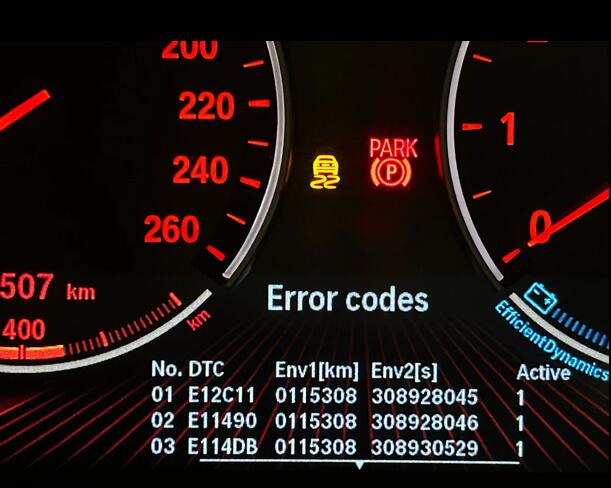Reading fault codes on a BMW is a straightforward process that involves using an OBD reader and diagnostic software. Here’s a step-by-step guide to help you understand and read BMW fault codes:
What You Need
- OBD Reader: A device like K+DCAN or ENET compatible with BMW.
- Diagnostic Software: Software such as ISTA for BMW.
- BMW ICOM NEXT
Steps to Read Fault Codes
- Locate the OBD Port: Find the OBD port in your BMW, which is usually located under the dashboard near the steering wheel.
- Connect the OBD Reader: Plug the OBD reader into the port.
- Run Diagnostic Software: Launch the diagnostic software on your laptop or device connected to the OBD reader.
- Initiate the Scan: Use the software to start scanning the car’s ECU (Engine Control Unit) for any stored fault codes.
- Interpret the Codes: Once the scan is complete, the software will display any fault codes. Use the structure of the codes to interpret them:
- First Letter: Indicates the system involved:
- P: Powertrain (engine and transmission)
- B: Body
- C: Chassis
- U: User network (communication network)
- Second Digit: Specifies the subsystem:
- 0-7: Various systems like fuel and air measurement, ignition systems, emissions controls, vehicle speed and idle systems, computer and output circuits, transmission.
- Third and Fourth Digits: Define the specific issue or fault.
- First Letter: Indicates the system involved:
- Research Specific Codes: If the codes are not self-explanatory, you may need to look them up in a BMW fault code list or consult the software’s database for a detailed description.
- Diagnose and Repair: Based on the fault code, diagnose the issue. Some problems might be simple and can be fixed by yourself, while others might require professional service.
Tips for Success
- Update Your Software: Ensure your diagnostic software is up-to-date to include the latest manufacturer-specific codes and updates.
- Keep a Log: Record the codes and any repairs or changes made. This can be helpful for future diagnostics or if you need to take your car to a professional.
- Check Connections: Ensure the OBD reader is properly connected to avoid erroneous readings or communication errors.
By following these steps, you can effectively read and interpret BMW fault codes to maintain and troubleshoot your vehicle.
More information about bmw diagnositc tools, please visit bmw trouble repair
